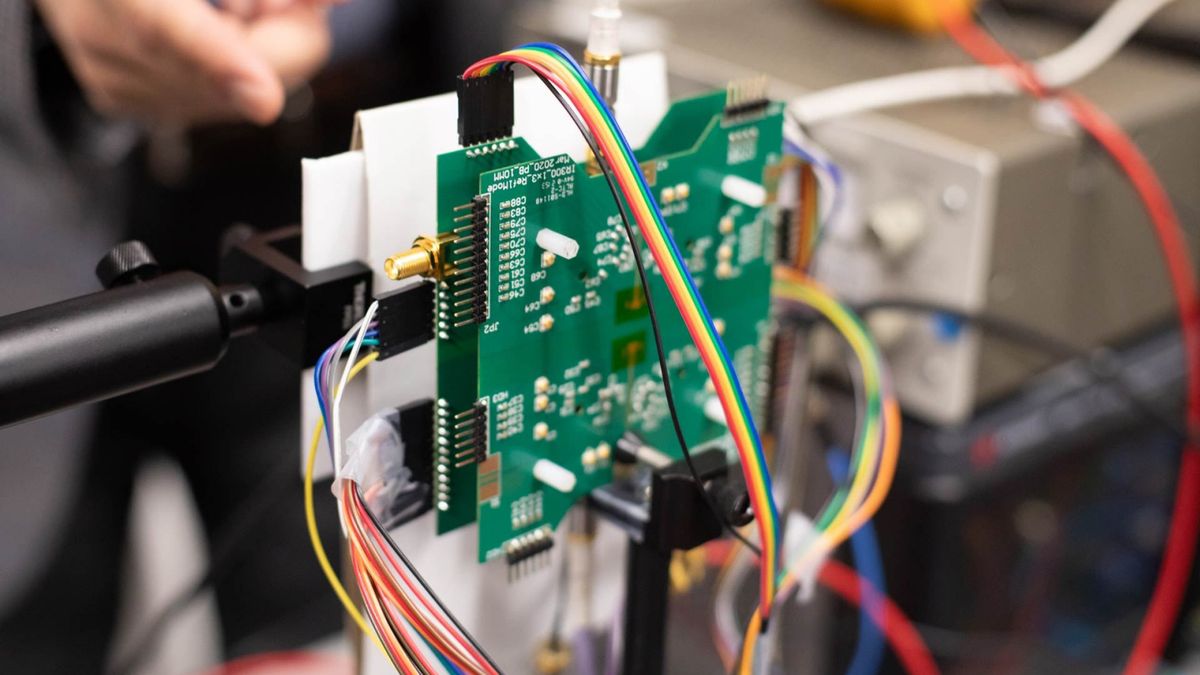Scientists have developed an imaging chip that could equip future smartphones with “Superman-inspired” X-ray vision — albeit operating within a much more limited range than the caped Kryptonian superhero.
The experimental chip consists of an array of three sensor pixels that emit and receive high-frequency radio signals in the millimeter-wave (mmWave) band of the electromagnetic spectrum. Signals reflected back from the target object are then amplified and mixed by onboard components, enabling outlines of the object to be viewed on a display.
In tests, the chip could detect an object behind cardboard at a distance of around 0.39 inches (1 centimeter). The researchers published their findings Jan. 5 in the journal IEEE Transactions on Terahertz Science and Technology.
It took 15 years of work — and an improvement in pixel performance by 100 million times — to make the chip small enough to fit in a mobile device, the researchers said in a statement. In the future, smartphones equipped with the chip may be capable of detecting the contents of envelopes or packages, or could be used to find studs, wires or cracked pipes behind walls.
Related: New display tech paves the way for ‘most realistic’ holograms in regular eyeglasses
“We designed the chip without lenses or optics so that it could fit into a mobile device. The pixels, which create images by detecting signals reflected from a target object, have the shape of a 0.5-mm square, about the size of a grain of sand,” said co-author of the paper Wooyeol Choi, assistant professor of electrical engineering at Seoul National University, in the statement.
Beyond making it possible to peer through walls and inside envelopes, the new imaging tech may find applications in medicine and healthcare, the researchers said. They likened the technology to that already used in passenger scanners found at airports — though they noted that their imager chip does not use microwaves.
Instead, the imager chip uses 300 GHz signals in the millimeter-wave (mmWave) band of the electromagnetic spectrum. These sit between the microwave and infrared bands and are considered safe for humans.
“This technology is like Superman’s X-ray vision. Of course, we use signals at 200 gigahertz to 400 gigahertz instead of X-rays, which can be harmful,” said Kenneth O, professor of electrical engineering at the University of Texas at Dallas, in the statement
Also unlike Superman’s X-ray vision, the imaging tech used in the chip can only be used at very close range — approximately 1 inch (2.5 cm) away from the object being scanned. This means that thieves wouldn’t be able to covertly scan the contents of your bag or pockets without your knowledge, the researchers said.
The next iteration of the chip will be designed to scan objects from a little further away — up to 5 inches (12.7 cm) — making it better at capturing small objects.




















Discussion about this post